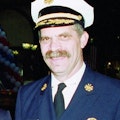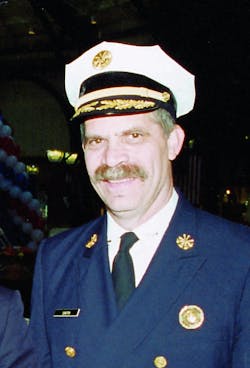40th Anniversary: Sharing Fire Operations Around the Country
Looking back 40 years to 1976, I can reflect on a time prior to when smoke detectors made a big impact on firefighting. I was an engine company captain, and I felt that our training had to be meaningful and challenging. I feel fortunate to have worked during the tumultuous years of the 1960s and 1970s as a firefighter and company officer. During those years, I responded to thousands of fires. There were many nights when we went from fire to fire. Many times we would be restoring hoseline and equipment on our apparatus at a fireground and hear another fire being dispatched. We would make ourselves available for service and immediately respond to another working fire. The ability to respond to so many fires permitted us to reach a level of teamwork where companies functioned as well-oiled machines. Another plus was that if we made a mistake, we didn’t have too long to dwell upon it before we would respond to another fire and rectify the previous mistake.
Like every firefighter, we kept looking for those little things to make us stand out from the companies we responded with. I remember prior to preconnected cross lays of 1¾-inch hoselines becoming standard equipment on newly delivered apparatus, we built plywood trays that held the hoseline in the jump seat area and could be deployed from either side of the apparatus much faster than from the rear hose-beds.
Once Firehouse Magazine was published, we had the ability to see how the rest of America was doing things, and we immediately copied the good ideas to improve our fireground operations.
In April 1988, I started writing the Fire Studies column for Firehouse. It has personally allowed me to share my experiences. My involvement with Firehouse has also allowed me to expand my horizons. I have met many leaders of the fire service. Chief Leo Stapleton, Deputy Chief Vinnie Dunn, Deputy Chief Mike Smith, Deputy Chief Len Carmichael, Chief Alan Brunacini, Chief Dennis Rubin and too many more to mention. Through interacting with them and many others, I learned a great deal to make me a better firefighter and a better chief officer. It is hard to imagine what my career would have been like without Firehouse Magazine.
About the Author

James P. Smith
JAMES P. SMITH, was a Firehouse contributing editor and a retired deputy chief of the Philadelphia Fire Department. He is an adjunct instructor at the National Fire Academy and the author of the fourth edition of the book "Strategic and Tactical Considerations on the Fireground," which was published by Brady/Pearson.
